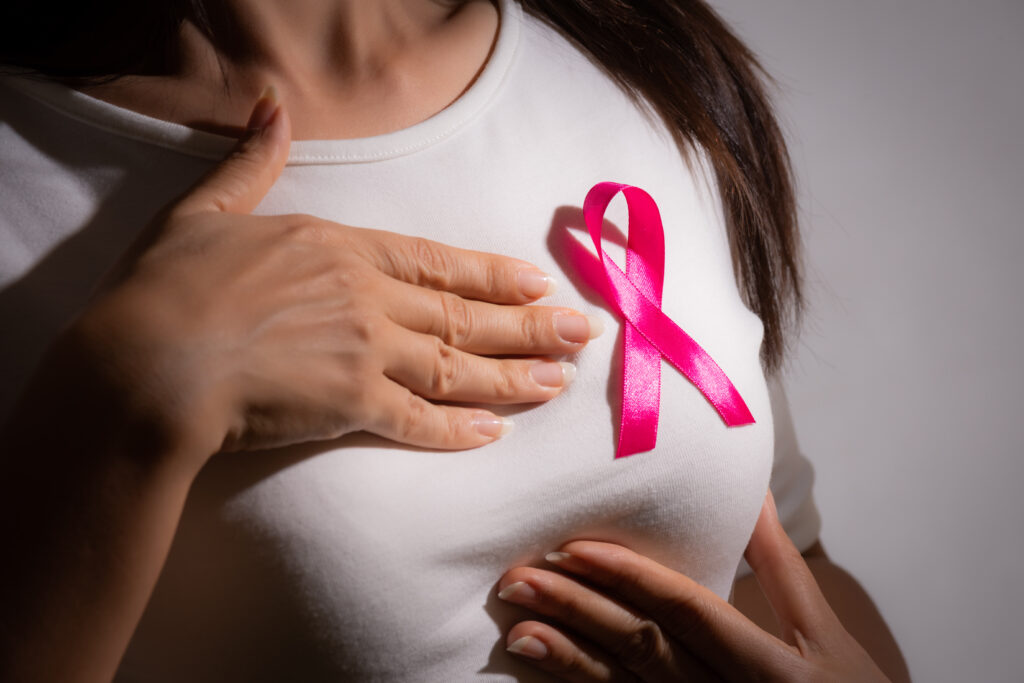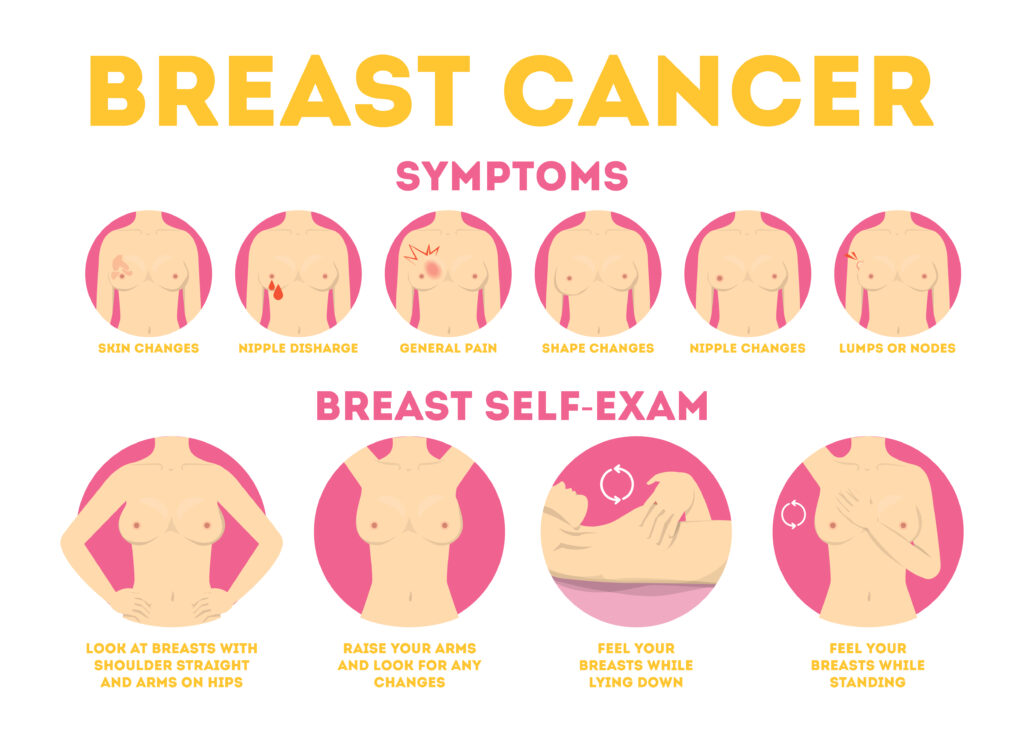Breast cancer is one of the most common cancers affecting people worldwide, and knowing the signs can help you catch any issues early. While this topic might seem overwhelming, understanding the basics can empower you to take charge of your health. Here’s a simple guide on what to look for and when to get checked.
Understanding the Basics
Breast cancer happens when cells in the breast grow uncontrollably. In its early stages, breast cancer might not show any noticeable symptoms at all—which is why regular check-ups are so important. However, being aware of the potential signs can make a big difference in catching it early.

Common Signs and Symptoms
Noticing any of these signs doesn’t necessarily mean you have breast cancer, but they’re worth discussing with your doctor:
- Lumps or Thickening: The most common sign is a new lump or mass in the breast or underarm area. It might feel hard or different from the surrounding tissue.
- Changes in Breast Size or Shape: Sudden changes in the size or shape of your breast can be a warning sign.
- Skin Changes: Look for dimpling, redness, or scaling on the skin of the breast. Sometimes the skin can also look like the texture of an orange peel.
- Nipple Changes: Any inversion of the nipple (it turning inward), discharge (especially if it’s bloody), or changes in the skin around the nipple should be noted.
- Pain: While pain isn’t usually an early sign of breast cancer, any persistent pain or discomfort in your breast should be checked out.

Screening and Self-Exams
Because breast cancer can start without any symptoms, regular screenings are essential. Here are some key ways to keep an eye on your breast health:
- Self-Exams: Learning how to perform regular self-exams can help you notice any changes early. It’s best to do this once a month when your breasts are least likely to be affected by your menstrual cycle.
- Mammograms: These X-ray screenings are recommended for women over a certain age (usually around 40-50, but it can vary depending on your risk factors). Mammograms can often detect tumors before you feel them.
- Clinical Exams: Regular check-ups with your healthcare provider are important. They can do a physical exam and recommend further testing if needed.
When to See a Doctor
If you notice any unusual changes in your breasts—like a new lump, skin changes, or nipple discharge—it’s important to make an appointment with your doctor. Early detection can improve treatment options and outcomes, so don’t hesitate to get things checked out even if you’re not sure.
Taking Action
Even if you’re feeling a bit anxious about the possibility, staying informed and proactive is the best way to manage your health. Keep track of any changes and don’t be afraid to discuss them with your healthcare provider. Regular screening and self-awareness are your best defenses against breast cancer.
Final Thoughts
While the thought of breast cancer can be daunting, knowledge is power. By staying vigilant and making regular screenings a part of your routine, you can catch potential issues early and take steps toward effective treatment. Remember, you know your body best—if something feels off, it’s always worth getting it checked.
This guide is for informational purposes only and should not replace professional medical advice. If you have concerns about your health, please consult a healthcare professional.

